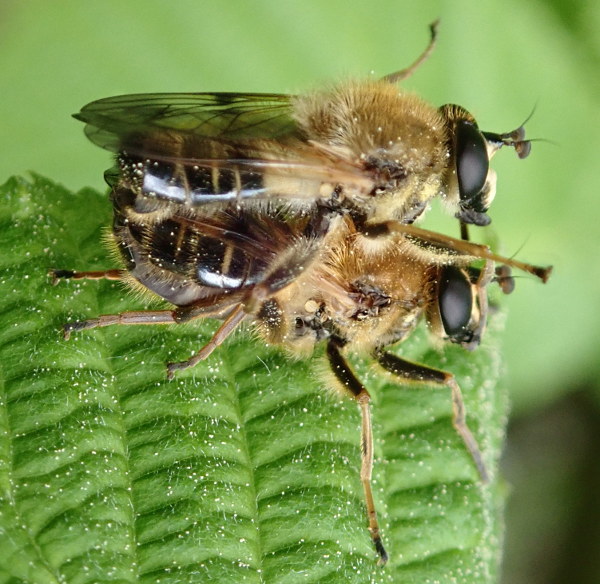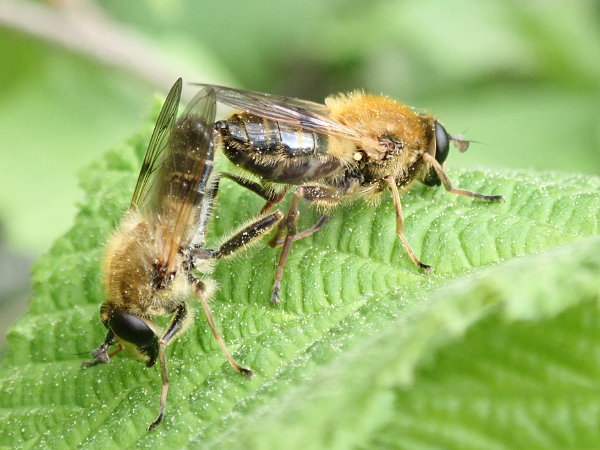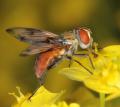Diptera.info :: Family forums :: Syrphidae
Who is here? 1 guest(s)
|
Two mating positions?
|
|
| Siga |
Posted on 09-05-2018 19:28
|
|
Member Location: Southern Germany Posts: 101 Joined: 17.05.07 |
Hallo, I just used one of the rare opportunities to take a photo of a living insect in that insect-poor times. I suspect it is 'Eristalis , that's why I post it here. If it is another family, would you please transfer it? I was very surprised to see the mating couple change position several times, without leaving the leaf, they were sitting on. I watched the couple about one minute. It was already in copulation when I came nearer. I attach a photo from every position. I would like to know, if this behaviour of changing position is normal in that species or in that genus. And of course I hope, you can identificate the species. Germany, Baden-Württemberg, Dreifaltigkeitsberg near Spaichingen 48,083332° 8,76299° 990 m at 9th May 2018 on leaf of Tilia Siga attached the following image:  [108.84Kb] |
|
|
|
| Siga |
Posted on 09-05-2018 19:30
|
|
Member Location: Southern Germany Posts: 101 Joined: 17.05.07 |
Now the other position
Siga attached the following image:  [72.46Kb] |
|
|
|
| Juergen Peters |
Posted on 09-05-2018 20:05
|
|
Member Location: northwest Germany Posts: 14283 Joined: 11.09.04 |
Hello, Siga wrote: I suspect it is 'Eristalis no, wing venation and shape of antennae do not match. I think it is Criorhina (asilica?). Best regards, Jürgen -=-=-=-=-=-=-=-=-=-=-=-=-=-=-=-= Juergen Peters Borgholzhausen, Germany WWW: http://insektenfo... -=-=-=-=-=-=-=-=-=-=-=-=-=-=-=-= |
| Siga |
Posted on 10-05-2018 07:16
|
|
Member Location: Southern Germany Posts: 101 Joined: 17.05.07 |
Thanks, Jürgen. I hope Paul will transfer the thread to the right forum |
|
|
|
| Gerrit Oehm |
Posted on 12-05-2018 10:45
|
|
Member Location: Germany Posts: 179 Joined: 26.11.11 |
@ Siga, Its still in the correct place in the forum, Criorhina is a Syrphid fly, too. |
|
|
|
| Siga |
Posted on 02-06-2018 08:39
|
|
Member Location: Southern Germany Posts: 101 Joined: 17.05.07 |
Thanks for your remark: the much better. I hope someone can tell the species (confirm Jürgens suggestion) and/or make some remarks to the switching from one position to the other during coupling. |
|
|
|
| Jump to Forum: |













